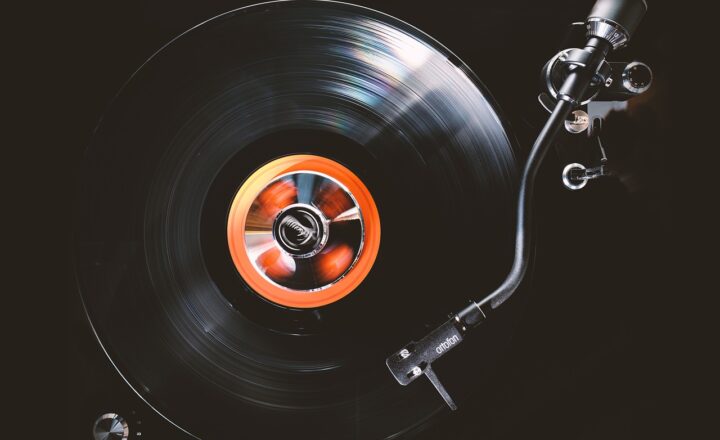
In an age dominated by digital music streaming services, it may come as a surprise that vinyl records have not only survived but flourished in recent years. The resurgence of vinyl records in the digital era represents more than just a nostalgic trend; it reflects a fundamental shift in how we perceive music consumption. This article will explore the factors contributing to the extraordinary comeback of vinyl records, the cultural significance they now hold, and what their future looks like in a world increasingly defined by digital convenience.
1. A Brief History of Vinyl Records
The journey of vinyl records can be traced back to the late 19th century when Thomas Edison introduced the phonograph. However, it was not until the 1940s that vinyl records began to replace shellac 78s as the preferred medium for recorded music. With the introduction of the 33 1/3 RPM long-playing (LP) records, listening to music became a vastly different experience. These LPs allowed entire albums to be played continuously, changing the way we consumed music.
By the 1980s, with the rise of cassette tapes and CDs, vinyl records began to wane in popularity. Many considered the format obsolete, but it clung to a dedicated fanbase, primarily among audiophiles and collectors who appreciated its warm sound and tactile experience. The digital age, characterized by rapid advancements in audio technology and the convenience of streaming platforms, posed a significant threat to analog formats. Yet, a seismic shift occurred during the late 2000s, leading us to the vinyl renaissance of today.
2. Factors Driving the Vinyl Comeback
Several key factors have contributed to the remarkable comeback of vinyl records in recent years:
- Nostalgia and Authenticity: The millennials and Gen Z cohorts are particularly drawn to experiences that evoke a sense of nostalgia. Vinyl records offer a tangible and authentic medium of music, contrasting with the ephemeral nature of digital files. The act of physically handling a record, engaging with its artwork, and listening to it on a turntable provides a unique, immersive experience.
- The Warm Sound of Vinyl: Audiophiles often praise vinyl for its superior sound quality compared to digital formats. The analog nature of vinyl allows for a depth and warmth that some listeners find lacking in digital recordings. Even as streaming quality continues to improve, for many, the sound profile of vinyl remains unparalleled.
- Limited Editions and Collectibility: The rise of limited edition releases from artists has created a new market. Fans of music are now eager to collect exclusive versions of their favorite albums that come with colored vinyl, collectible artwork, and bonus tracks. This trend has turned vinyl records into collector’s items and investments.
- Record Store Day: Founded in 2007, Record Store Day celebrates independent record stores and has become a cultural phenomenon. It has played a crucial role in the resurgence of vinyl by fostering community and promoting special releases. This event attracts vinyl enthusiasts and newcomers alike, creating excitement around vinyl culture.
- Social Influences: Social media platforms like Instagram and TikTok have also played significant roles in promoting vinyl culture. Users often post pictures of their collections, album hauls, and record spins, visually showcasing what makes vinyl special. This organic marketing has led more people to explore vinyl records for themselves.
3. The Cultural Significance of Vinyl Records Today
Today, vinyl records stand at the intersection of nostalgia and modernity. They symbolize a cultural appreciation for artistry and craftsmanship in music. The album art, sleeve notes, and physical presentation of vinyl records transform the music experience into an art form. Collecting records is now recognized as a hobby and a form of self-expression, where individuals can curate personalized collections that reflect their musical tastes.
Moreover, the vinyl resurgence reflects a growing disconnection with the instantaneous nature of digital music consumption. With playlists and singles becoming the norm, albums are at risk of being forgotten. Vinyl records encourage listeners to experience entire albums, emphasizing storytelling in music rather than just individual tracks. This has rekindled appreciation for complete musical works, allowing artists to express themselves fully across multiple tracks.
4. The Current State of Vinyl Production and Sales
As of 2023, sales of vinyl records have surpassed CDs for the first time since the 1980s, marking a historic shift in the music industry. According to a report by the Recording Industry Association of America (RIAA), vinyl sales accounted for 50% of physical music sales in 2022. Record labels have taken notice, ramping up production to meet consumer demand. Major releases from current artists often come with vinyl variants that sell out quickly.
Vinyl pressing plants are experiencing unprecedented demand, which has led to longer production times and challenges in meeting consumer needs. However, this demand is invigorating the market and generating jobs within the industry, leading to a resurgence of small, local pressing plants catering to the appetite for vinyl.
5. Future of Vinyl Records
Looking ahead, many industry experts believe the demand for vinyl records will continue to grow, albeit at a steady pace. As more younger listeners become interested in vinyl, record labels are likely to experiment with new releases and collaborations that cater specifically to this audience.
The integration of technology into the vinyl experience is also likely to play a vital role. Innovations such as Bluetooth-enabled turntables and customizable portable record players make vinyl accessible to a broader audience while retaining its traditional charm. The use of augmented reality with album covers may also create immersive listening experiences that enhance music engagement.
Despite the fluctuations that may come with market trends, one thing is clear: vinyl records have carved out a unique niche within the broader music industry, serving as both an artifact from the past and a vibrant medium for contemporary music appreciation.
Conclusion
The resurgence of vinyl records in the digital era represents a fascinating cultural phenomenon. This comeback is fueled by nostalgia, sound quality, collectibility, and a strong community formed around record enthusiasts. Vinyl records are not merely relics of the past; they are enduring artifacts that reflect our evolving relationship with music. Whether you are a seasoned collector or new to the vinyl scene, there has never been a better time to dive into the world of records and experience the magic they hold.
From classic albums to contemporary releases, the vinyl revival presents an opportunity to forge connections through music in a digital landscape that often lacks personal touch. As long as there are music lovers who thrive on experiencing their favorite albums, vinyl records will continue to play an essential role in the industry—a timeless medium that defies obsolescence.






